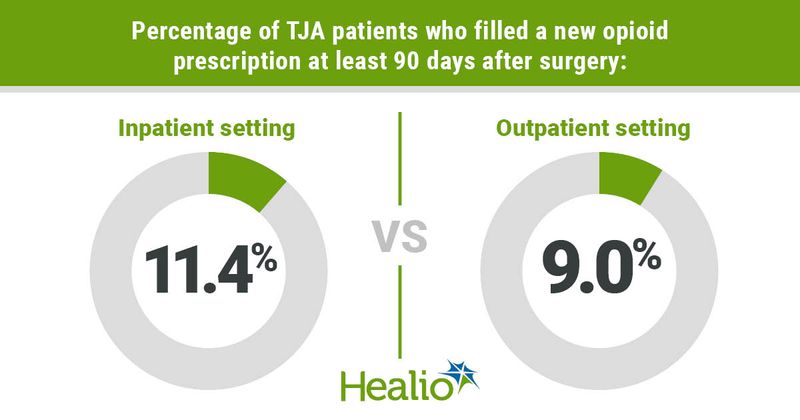Study finds outpatient TJA is not a risk factor for opioid dependence
Click Here to Manage Email Alerts
Patients who undergo total joint arthroplasty in the outpatient setting are less likely to become persistent opioid users than those who undergo inpatient total joint arthroplasty, according to published results.
In a retrospective cohort study, researchers from Boston Medical Center and Brigham and Women’s Hospital analyzed 92,506 “opioid-naïve” patients who underwent inpatient or outpatient TJA from 2007 to 2017. The researchers performed multivariable analysis to determine any association between surgical setting and risk of persistent opioid use, which they dened as a lled opioid prescription more than 90 days after surgery.

According to the study, 78.9% of the outpatient cohort and 87.6% of the inpatient cohort were prescribed opioids. Overall, 86.9% of all patients were prescribed opioids.
Researchers also noted both inpatient and outpatient cohorts were prescribed similar morphine milligram equivalents. However, the inpatient cohort was “signicantly more likely” to use opioids after 90 days postoperatively, they wrote in the study.
After controlling for patient factors, researchers found 9% of patients in the outpatient cohort were lling new opioid prescriptions after 90 days compared with 11.4% in the inpatient cohort. Thus, “outpatient TJA, as compared with inpatient TJA, does not appear to be a risk factor for new opioid dependence,” the researchers wrote.
“Given the cost-effectiveness, patient satisfaction and safety of outpatient TJA, centers should be encouraged to continue transitioning to the outpatient model for lower-risk patients,” they added.
